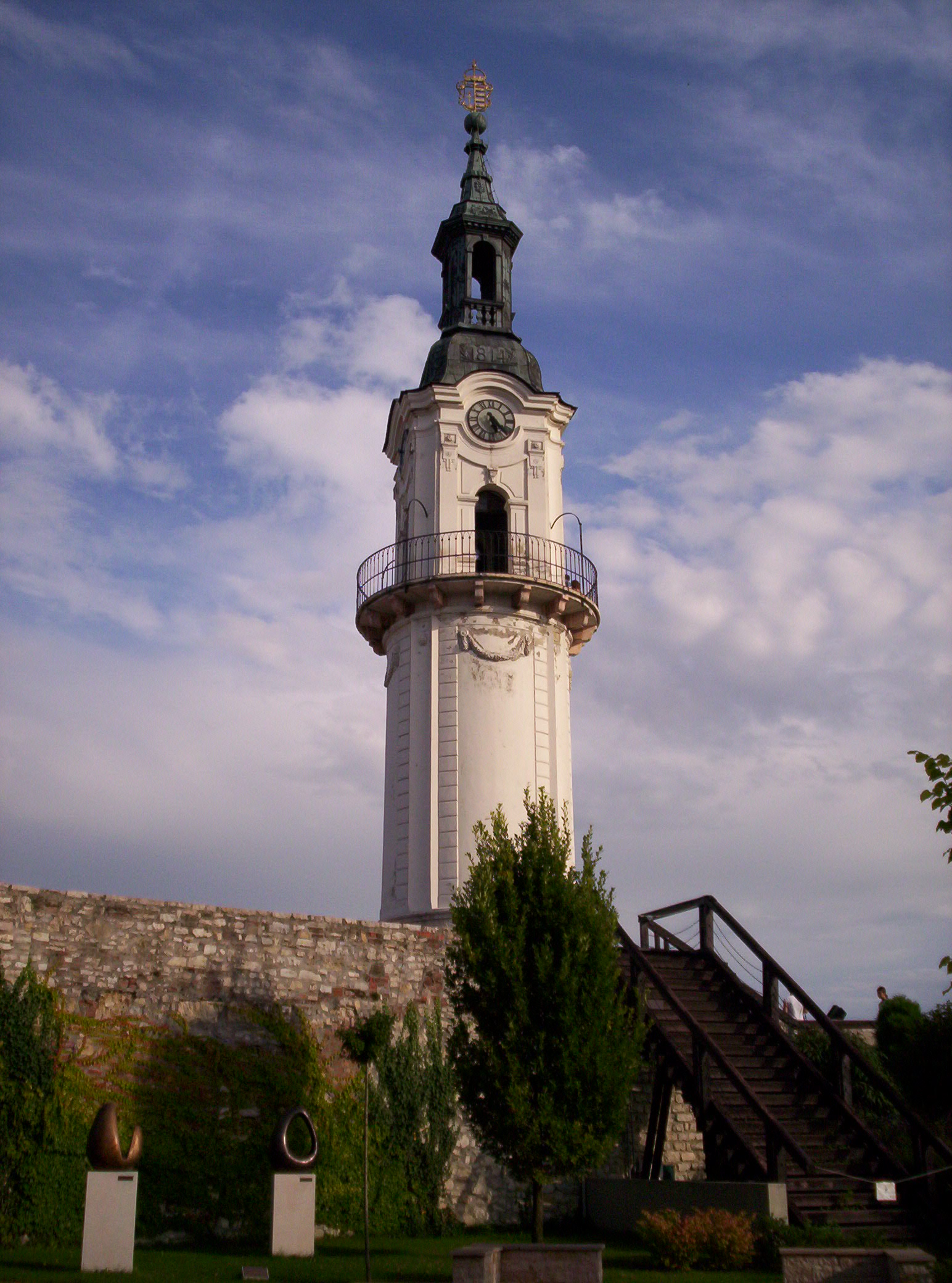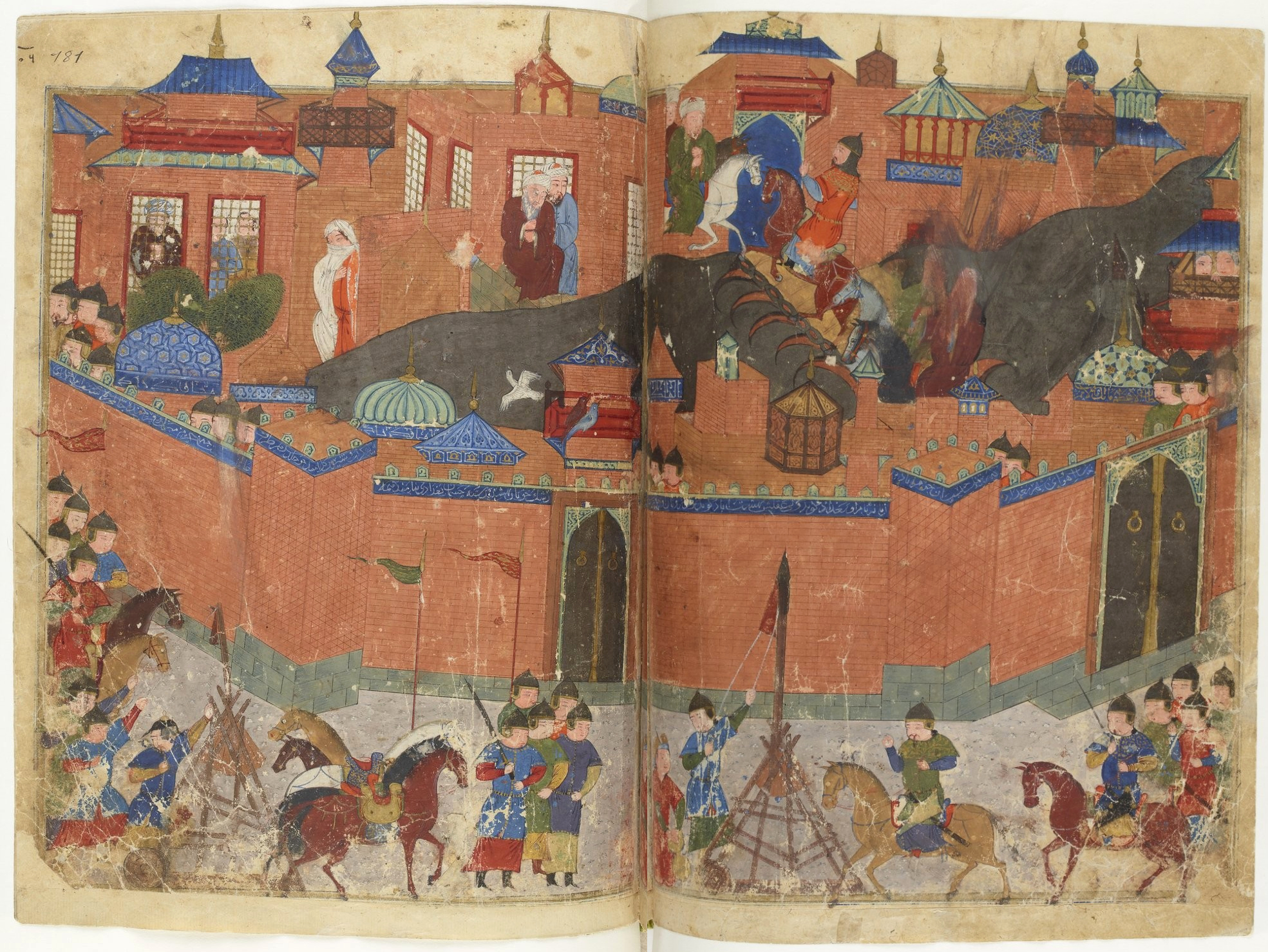|
Castle Of Sümeg
Castle of Sümeg is a castle by the town of Sümeg, Veszprém (county), Veszprém county, Hungary. Built in the mid or late 13th century by Béla IV of Hungary, Sümeg Castle is situated atop a mountain called "Castle Hill", 20 miles north of Lake Balaton. During its existence, it has been expanded several times. In the 15th century, it was fortified, and the second of two towers was built. It has been under siege several times, and has experienced two fires. Today, it is the main tourist attraction for visitors to Sümeg. Description It is irregular in shape, and situated in a north–south orientation atop a mountain called "Castle Hill", 20 miles north of Lake Balaton. It has two towers, and is 125 metres long and 80 metres wide. The interior contains a walled pathway. This leads to internal gatehouse that opens into the main courtyard. History This castle was originally built in the mid or late 13th century by Béla IV of Hungary, where he lived during the Mongolian invasi ... [...More Info...] [...Related Items...] OR: [Wikipedia] [Google] [Baidu] |
Hungary
Hungary is a landlocked country in Central Europe. Spanning much of the Pannonian Basin, Carpathian Basin, it is bordered by Slovakia to the north, Ukraine to the northeast, Romania to the east and southeast, Serbia to the south, Croatia and Slovenia to the southwest, and Austria to the west. Hungary lies within the drainage basin of the Danube, Danube River and is dominated by great lowland plains. It has a population of 9.6 million, consisting mostly of ethnic Hungarians, Hungarians (Magyars) and a significant Romani people in Hungary, Romani minority. Hungarian language, Hungarian is the Languages of Hungary, official language, and among Languages of Europe, the few in Europe outside the Indo-European languages, Indo-European family. Budapest is the country's capital and List of cities and towns of Hungary, largest city, and the dominant cultural and economic centre. Prior to the foundation of the Hungarian state, various peoples settled in the territory of present-day Hun ... [...More Info...] [...Related Items...] OR: [Wikipedia] [Google] [Baidu] |
Castle
A castle is a type of fortification, fortified structure built during the Middle Ages predominantly by the nobility or royalty and by Military order (monastic society), military orders. Scholars usually consider a ''castle'' to be the private fortified house, fortified residence of a lord or noble. This is distinct from a mansion, palace, and villa, whose main purpose was exclusively for ''pleasance'' and are not primarily fortresses but may be fortified. Use of the term has varied over time and, sometimes, has also been applied to structures such as hill forts and 19th- and 20th-century homes built to resemble castles. Over the Middle Ages, when genuine castles were built, they took on a great many forms with many different features, although some, such as curtain wall (fortification), curtain walls, arrowslits, and portcullises, were commonplace. European-style castles originated in the 9th and 10th centuries after the fall of the Carolingian Empire, which resulted ... [...More Info...] [...Related Items...] OR: [Wikipedia] [Google] [Baidu] |
Sümeg
Sümeg () is a town in Veszprém county, Hungary. Sümeg is mostly known for Sümeg Castle. It is north of Lake Balaton. Twin towns – sister cities Sümeg is twinned with: * Aichtal, Germany * Sovata, Romania * Tapolca Tapolca (; ) is a town in Veszprém County, Hungary, close to Lake Balaton. It is located at around . The town has an outer suburb, Tapolca-Diszel, approximately 5 km to the East. Etymology The origin of ''Tapolca'' is disputed, originat ..., Hungary * Vobarno, Italy References External links * in Hungarian Populated places in Veszprém County {{Veszprem-geo-stub ... [...More Info...] [...Related Items...] OR: [Wikipedia] [Google] [Baidu] |
Veszprém (county)
Veszprém (; , , , ) is one of the oldest urban areas in Hungary, and a city with county rights. It lies approximately north of the Lake Balaton. It is the administrative center of the Counties of Hungary, county of the same name. Etymology The city's name derives from the West Slavic languages, West Slavic-language personal name ''Bezprem'' or ''Bezprym'' (Proto-Slavic ''Bezprěmъ'') which translates literally to "stubborn", "self-confident, not willing to retreat". ''Besprem'' (before 1002), ''Vezprem'' (1086), ''Bezpremensis'' (1109). The form ''Vezprem'' originates in early medieval scribal habits and frequent exchange of ''B'' and ''V'' under the influence of the Greek language. Location and legend The city can be reached via the M7 highway and Road 8. It can also be reached from Győr via Road 82 and from Székesfehérvár via Road 8. According to a Hungarian folklore, local legend, Veszprém was founded on seven hills. The seven hills are Várhegy (Castle Hill), Bened ... [...More Info...] [...Related Items...] OR: [Wikipedia] [Google] [Baidu] |
Béla IV Of Hungary
Béla IV (1206 – 3 May 1270) was King of Hungary and King of Croatia, Croatia between 1235 and 1270, and Duke of Styria from 1254 to 1258. As the oldest son of Andrew II of Hungary, King Andrew II, he was crowned upon the initiative of a group of influential noblemen in his father's lifetime in 1214. His father, who strongly opposed Béla's coronation, refused to give him a province to rule until 1220. In this year, Béla was appointed Duke of Slavonia, also with jurisdiction in Croatia and Dalmatia. Around the same time, Béla married Maria Laskarina, Maria, a daughter of Theodore I Laskaris, Emperor of Nicaea. From 1226, he governed Transylvania as Duke of Transylvania, duke. He supported Christian missions among the pagan Cumans who dwelled in the plains to the east of his province. Some Cuman chieftains acknowledged his suzerainty and he adopted the title of King of Cumania in 1233. King Andrew died on 21 September 1235 and Béla succeeded him. He attempted to restore royal ... [...More Info...] [...Related Items...] OR: [Wikipedia] [Google] [Baidu] |
Peter Stehlik 2010
Peter may refer to: People * List of people named Peter, a list of people and fictional characters with the given name * Peter (given name) ** Saint Peter (died 60s), apostle of Jesus, leader of the early Christian Church * Peter (surname), a surname (including a list of people with the name) Culture * Peter (actor) (born 1952), stage name Shinnosuke Ikehata, a Japanese dancer and actor * ''Peter'' (1934 film), a film directed by Henry Koster * ''Peter'' (2021 film), a Marathi language film * "Peter" (''Fringe'' episode), an episode of the television series ''Fringe'' * ''Peter'' (novel), a 1908 book by Francis Hopkinson Smith * "Peter" (short story), an 1892 short story by Willa Cather * ''Peter'' (album), a 1972 album by Peter Yarrow * ''Peter'', a 1993 EP by Canadian band Eric's Trip * "Peter", 2024 song by Taylor Swift from '' The Tortured Poets Department: The Anthology'' Animals * Peter (Lord's cat), cat at Lord's Cricket Ground in London * Peter (chief mouser), ... [...More Info...] [...Related Items...] OR: [Wikipedia] [Google] [Baidu] |
Mongolian Invasion
The Mongol invasions and conquests took place during the 13th and 14th centuries, creating history's largest contiguous empire, the Mongol Empire (1206–1368), which by 1260 covered large parts of Eurasia. Historians regard the Mongol devastation as one of the deadliest episodes in history. At its height, the Mongol Empire included modern-day Mongolia, China, North Korea, South Korea, Myanmar, Iran, Iraq, Afghanistan, Pakistan, Kashmir, Kazakhstan, Tajikistan, Kyrgyzstan, Turkmenistan, Uzbekistan, Siberia, Georgia, Armenia, Azerbaijan, Turkey, Belarus, Ukraine, Moldova, Romania, and most of European Russia. Overview The Mongol Empire developed in the course of the 13th century through a series of victorious campaigns throughout Eurasia. At its height, it stretched from the Pacific to Central Europe. It was later known as the largest contiguous land empire of all time. In contrast with later "empires of the sea" such as the European colonial powers, the Mongol Empire was a ... [...More Info...] [...Related Items...] OR: [Wikipedia] [Google] [Baidu] |
Roman Catholic Archdiocese Of Veszprém
The Archdiocese of Veszprém (, ) is a Latin Church archdiocese of the Catholic Church in Hungary. Believed to have been established in 1009 AD by King Stephen I of Hungary, as the Diocese of Veszprém, the diocese was originally a suffragan to the Archdiocese of Esztergom. In 1993, the Diocese was elevated to an Archdiocese. The Archdiocese is the Metropolitan of the Diocese of Kaposvár and the Diocese of Szombathely. The Cathedral of Veszprém is dedicated to Saint Michael. The current archbishop is György Udvardy, formerly Bishop of Pecs, who was appointed by Pope Francis on July 12, 2019, to succeed the retiring Gyula Márfi. Establishment of the diocese The circumstances of the establishment of the episcopal see in Veszprém are still under debate. It is probable that Veszprém was the habitual residence of Bishop Bruno, who had been sent to evangelise the Magyars in 972; but it was probably only in 1009 when King Stephen I of Hungary issued the Deed of Foundation o ... [...More Info...] [...Related Items...] OR: [Wikipedia] [Google] [Baidu] |
Stephen V Of Hungary
Stephen V (, , ; before 18 October 1239 – 6 August 1272) was King of Hungary and King of Croatia, Croatia between 1270 and 1272, and Duke of Styria from 1258 to 1260. He was the oldest son of King Béla IV and Maria Laskarina. King Béla had his son coronation of the Hungarian monarch, crowned king at the age of six and appointed him Duke of Slavonia. Still a child, Stephen married Elizabeth the Cuman, Elizabeth, a daughter of a chieftain of the Cumans whom his father settled in the Great Hungarian Plain. King Béla appointed Stephen Duke of Transylvania in 1257 and Duke of Styria in 1258. The local noblemen in Duchy of Styria, Styria, which had been annexed four years before, opposed his rule. Assisted by King Ottokar II of Bohemia, they rebelled and expelled Stephen's troops from most parts of Styria. After Ottokar II routed the united army of Stephen and his father in the Battle of Kressenbrunn on 12 July 1260, Stephen left Styria and returned to Transylvania. Stephen ... [...More Info...] [...Related Items...] OR: [Wikipedia] [Google] [Baidu] |
Veszprém
Veszprém (; , , , ) is one of the oldest urban areas in Hungary, and a city with county rights. It lies approximately north of the Lake Balaton. It is the administrative center of the county of the same name. Etymology The city's name derives from the West Slavic-language personal name ''Bezprem'' or '' Bezprym'' (Proto-Slavic ''Bezprěmъ'') which translates literally to "stubborn", "self-confident, not willing to retreat". ''Besprem'' (before 1002), ''Vezprem'' (1086), ''Bezpremensis'' (1109). The form ''Vezprem'' originates in early medieval scribal habits and frequent exchange of ''B'' and ''V'' under the influence of the Greek language. Location and legend The city can be reached via the M7 highway and Road 8. It can also be reached from Győr via Road 82 and from Székesfehérvár via Road 8. According to a local legend, Veszprém was founded on seven hills. The seven hills are Várhegy (Castle Hill), Benedek-hegy (St. Benedict Hill), Jeruzsálem-hegy (Jerusalem Hill ... [...More Info...] [...Related Items...] OR: [Wikipedia] [Google] [Baidu] |
List Of Castles In Hungary
This list of castles in Hungary article consists mostly of the well-known castles on the territory of today's Hungary. List of castles See also *Palaces and mansions in Hungary *List of castles in Europe External linksHomepage of castles in Hungary and in the ancient Hungarian Kingdom {{Castles in Hungary Castles in Hungary, Lists of buildings and structures in Hungary, Castles Lists of castles in Europe, Hungary Lists of castles by country, Hungary Lists of tourist attractions in Hungary, Casltes ... [...More Info...] [...Related Items...] OR: [Wikipedia] [Google] [Baidu] |





